Kraków 2018-06-19
Construction MiG-15 / Lim-1
102 Section 1952-07-17. WSK PLZ Mielec Lim-1.
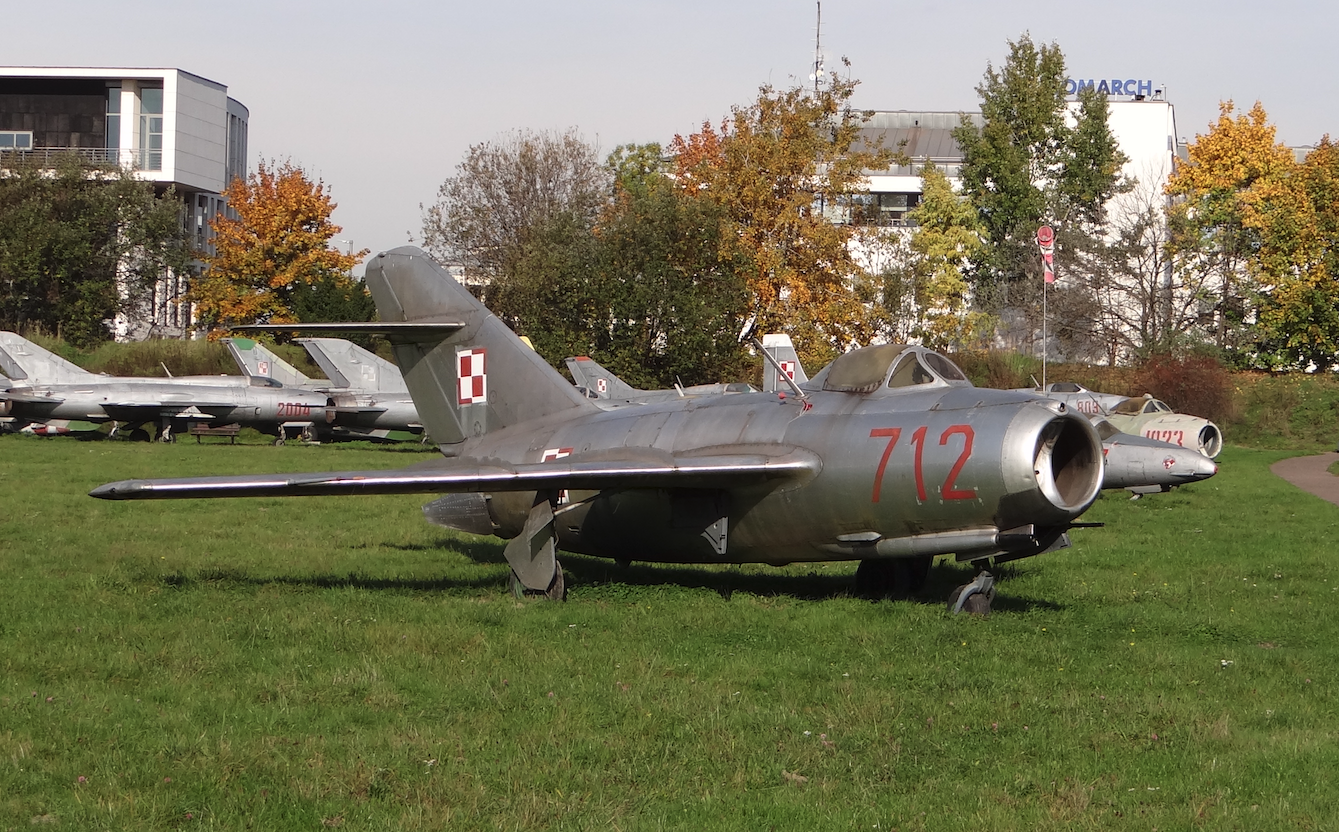
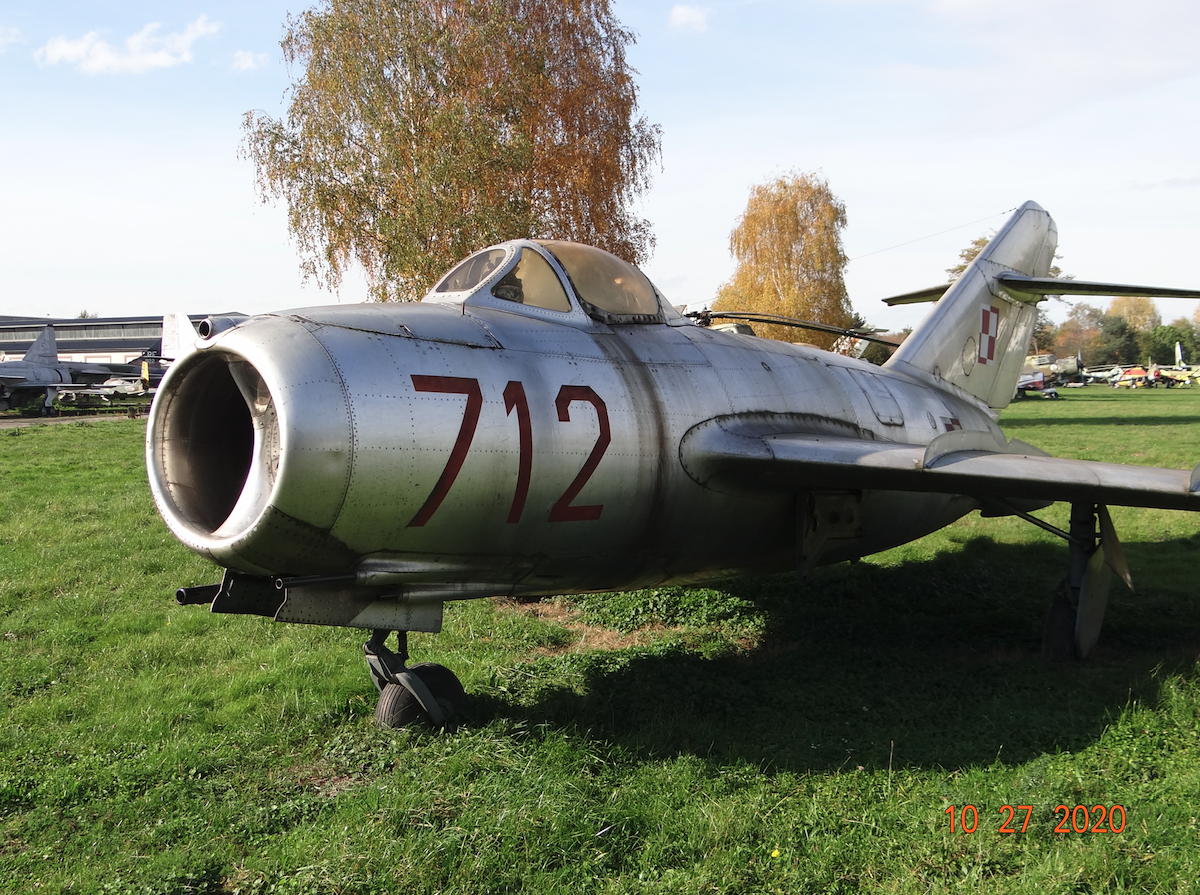
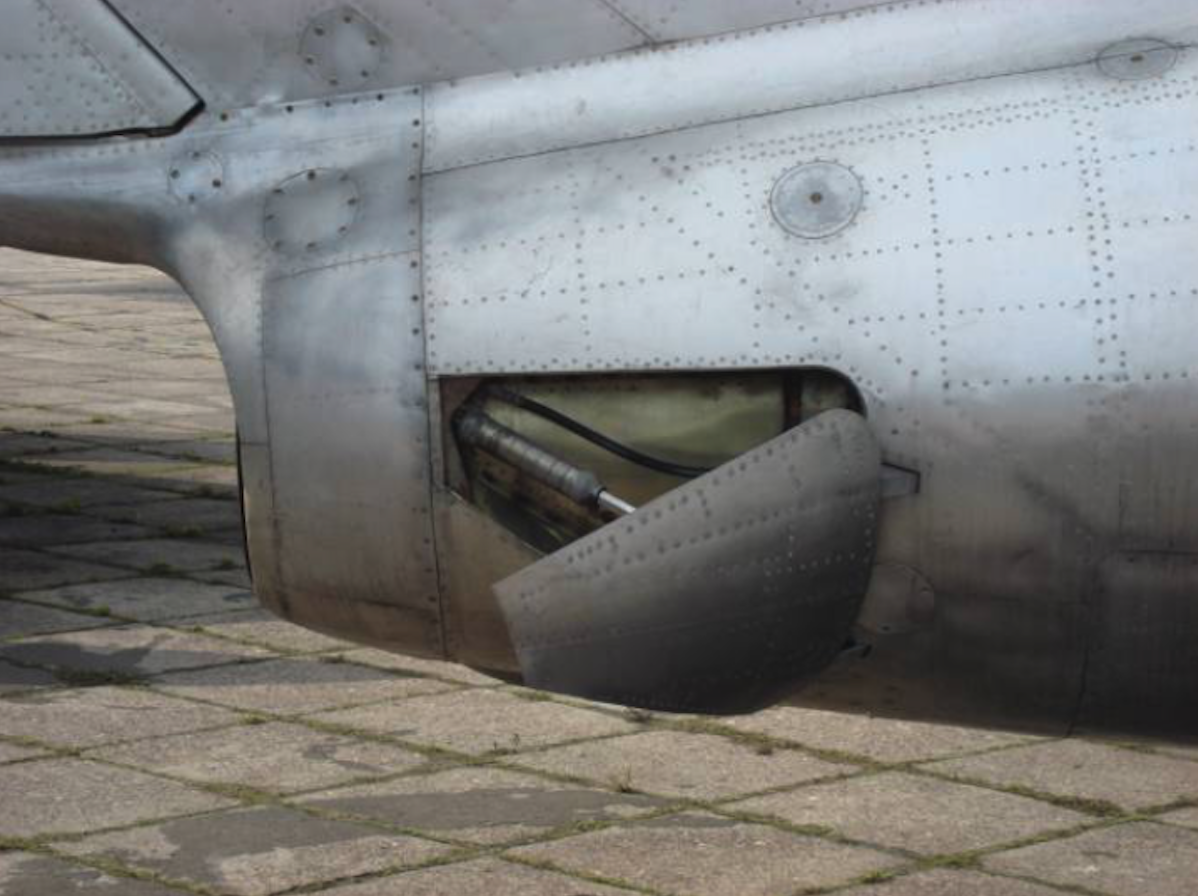
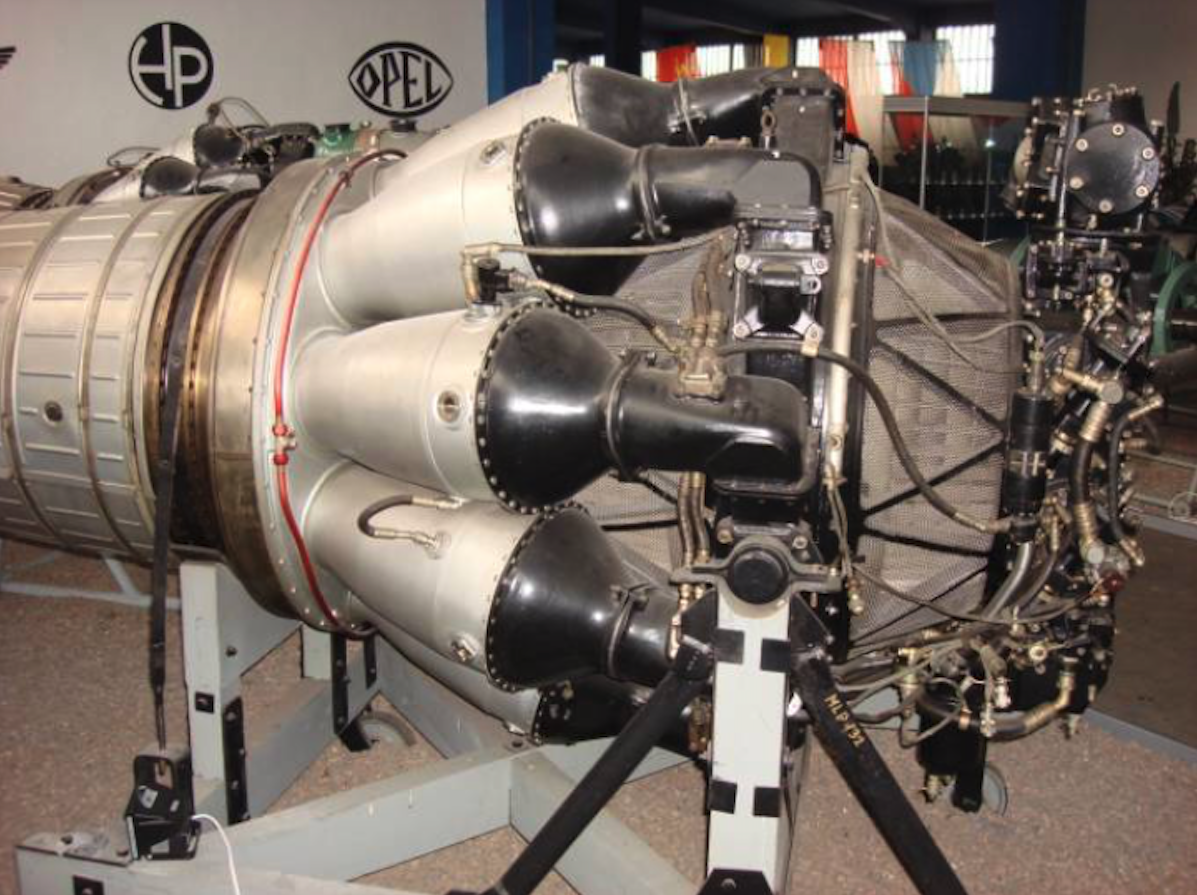
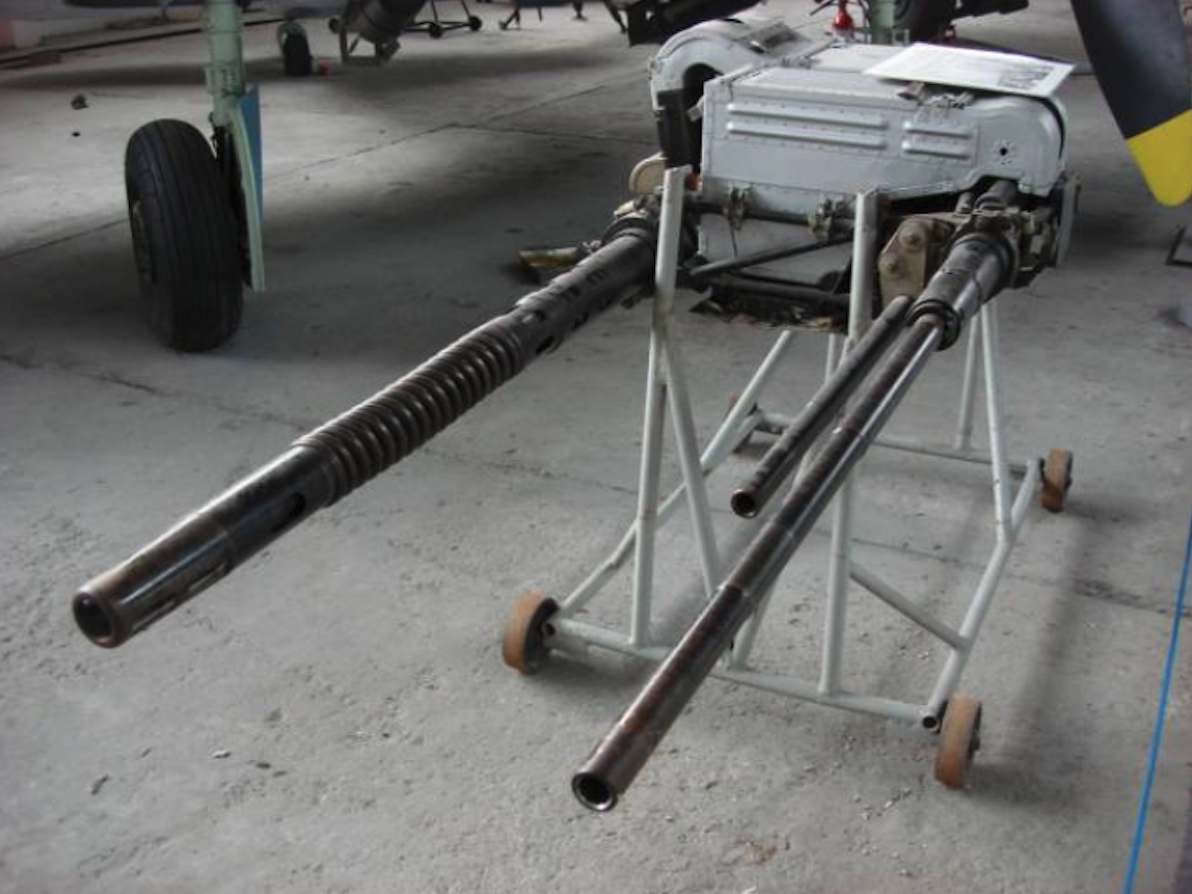
This plane is a front fighter, single-seater, single-engine, built in a classic layout. The plane is a mid-plane. Metal construction, mainly duralumin - D 16-T, and in important places steel - 30 ChGSA.
Swept-wings, 37 degrees on the leading edge, raise negative -2 degrees, wedge angle 1 degree. A symmetric profile (next to fuselage) CAGI S-10s, 9% thick, and (at the end of the wing) CAGI SR-3-12, with a relative thickness of 12%. Single-girder carrying structure with rear auxiliary girder. Working cover with a thickness of 1 mm to 2 mm. At the end of the wing, the weight of 26 kg reduces vibration (anti-fluid). On the upper surface there are two pairs of 10 cm of aerodynamic windscreens. Dampers of the type "expanders", when lowered, they extend by 20 cm. To take off swept 20 degrees for landing 55 degrees. Area 1.18 m2. Ailerons with an area of 0.505 m2, are swept + 15 degrees. Leaf extension 4.85, convergence 1.61.
The fuselage with a circular cross-section has a length of 8.08 m. Front grip with a diameter of 0.747 mm. A duct carried intake air around the cockpit area and back together ahead of the engine. The pressure cabin is heated by air from the engine. Glazing protrudes from the contour of the hull. It is divided into a constant windshield with an armored glass with a total thickness of 64 mm and a retractable hand deflector. The chair is ejected with a powder charge to the height of 11 m. The minimum safe height of the chair's use is about 250 m above the ground. The cabin is armored. The main fuel tank is located behind the cab. The engine nozzle has a diameter of 0.560 m.
The aircraft's steering control is of the cross type, oblique. The vertical elevation has a bevel angle of 56 degrees. The ballast has an area of 3 m2, the rudder has an area of 1 m2, it is deflected 20 degrees in both directions. Horizontal elevation is 40 degrees bevel angle and has an area of 3 m2, including a rudder 0.79 m2. On the left there is a balancing flap with an area of 0.046 m2. Swinging is 32 degrees up, down 16 degrees.
The airplane has a three-support chassis with a front wheel. All wheels are single. The front wheel is 480 x 200, and it is hidden forward to the fuselage. Main wheels with dimensions of 660 x 160, hidden in the wings towards the fuselage. Main wheel chassis 3,81 m, chassis base 3,175 m.
Powered MiG-15 / Lim-1.
The turbojet engine is single-shaft, single-flow, Soviet design RD-45 F and Polish Lis-1, with a thrust of 1 x 22.25 kN (1 x 2,270 kG). It was produced in Poland at WSK Rzeszów.
The engine is built from a single-stage, two-side centrifugal compressor, behind which are placed 9-pit combustion chambers, followed by a 1-stage turbine. This turbine simultaneously drives the generator and the high-altitude compressor. The fuel system consists of tanks placed in the fuselage and additional tanks suspended under the wings. In the fuselage, the first rubber fuel tank has a capacity of 1 245 liters. The rear fuel tank consists of two side tanks with a capacity of 2 x 167 liters.
Two additional fuel tanks are fastened with universal BD-2-48MiG locks, the same ones used for hanging bombs or missile cartridges. These tanks initially had a capacity of 2 x 175 liters. They have undergone modernization to improve the aerodynamic shape by adding a small cone at the end. The tanks are metal. There is the possibility of dropping them during the flight after exhausting their fuel. However, during this operation the tank slides down the wing and may damage its surface.
Later, fuel tanks with a capacity of 2 x 400 liters, more aerodynamically shaped, made of duralumin or plastic began to be used.
Equipment MiG-15 / Lim-1.
Radio transceiver RSI-6 K (RSI - radiostation istriebitielnaja), or RSIU-3, radiopółkomp RPKO-10 M, speedometer KUS-1200, variometer WAR-75, turn indicator EUP-48, artificial horizon AGI-1, machometer M -0,95, gyroscopic semi-automatic ASP-3 N or ASP-3 MN, later newer AP-2 R for shooting the missile cartridges TRS-190 or ARS-212, S-13 photocamera taking 8 photos per second, with 5 meters of film.
Armament MiG-15 / Lim-1.
Armament; one 37 mm caliber gun, type NS-37 (rate of fire 250 shots / minute) or N-37 and two 23 mm caliber guns, type NS-23 (rate of fire 550 shots / minute) or NR-23. They were placed on a tow truck carriage lowered down, under the cabin floor. These weapons come in all possible combinations. Stock of ammunition; 40 pieces for caliber 37 mm., 80 pieces of bullets for each gun of 23 mm.
The fighter Lim-1 most often has on the left side of the tow truck 2 guns NS-23 kal.23 mm with a supply of 80 rounds per gun. On the right side of the tow truck there is one NS-37 gun cal. 37 mm with a stock of 40 rounds.
The Lim-1 aircraft has two additional fuel tanks under its wings. In the following years, the fighter gained the possibility of carrying bombs and rockets; 4 pcs. TRS-190 or 2 pcs. ARS-212. The weaponry also includes the EKSR-46 electro-signaling rocket with 4 colored cartridges. The electro-signaling rocket was used in emergency in order to get out of the corkscrew.
Specifications MiG-15 / Lim-1:
General characteristics: Crew: 1. Length: 10.102 m (33 ft 2 in). Wingspan: 10.085 m (33 ft 1 in). Height: 3.7 m (12 ft 2 in). Wing area: 20.6 m² (221.7 ft²). Airfoil: TsAGI S-10 / TsAGI SR-3. Empty weight: 3,681 kg (8,113 lb). Loaded weight: 5,044 kg (11,177 lb). Max. takeoff weight: 6,106 kg (13,458 lb) with 2 × 600 l (130 imp gal; 160 US gal) drop tanks. Fuel capacity: 1,420 l (310 imp gal; 380 US gal).
Powerplant: 1 × Klimov VK-1 centrifugal-flow turbojet, 26.5 kN (5,950 lbf). In Poland Lis-1.
Performance. Maximum speed: At sea level: Mach 0.87 (1,076 km/h; 669 mph). At 3,000 m (9,840 ft): Mach 0.9 (1,107 km/h; 688 mph). Cruise speed: Mach 0.69 (850 km/h; 528 mph). Range: 2,520 km (1,565 mi; 1,362 nmi) at 12,000 m (39,360 ft) with 2 × 600 l (130 imp gal; 160 US gal) drop tanks. Service ceiling: 15,500 m (50,840 ft). Rate of climb: 51.2 m/s (10,080 ft/min). Wing loading: 296.4 kg/m² (60.8 lb/ft²). Thrust/weight: 0.54.
Armament: 2 × 23 mm Nudelman-Rikhter NR-23 autocannons in the lower left fuselage (80 rounds per gun, 160 rounds total). 1 × 37 mm Nudelman N-37 autocannon in the lower right fuselage (40 rounds total). 2 × 100 kg (220 lb) bombs, drop tanks, or unguided rockets on 2 underwing hard-points.
Written by Karol Placha Hetman
